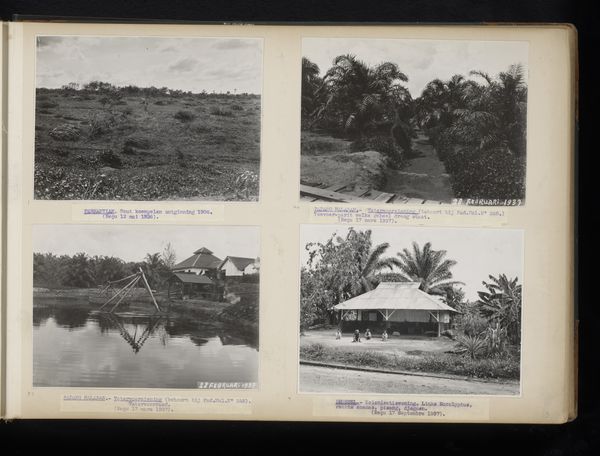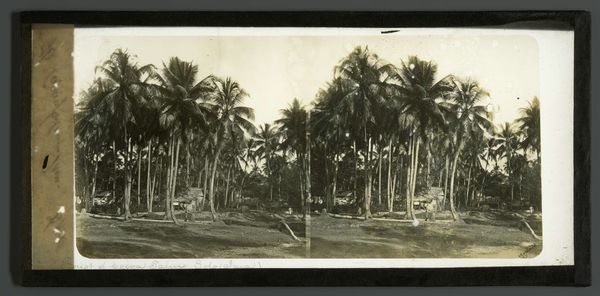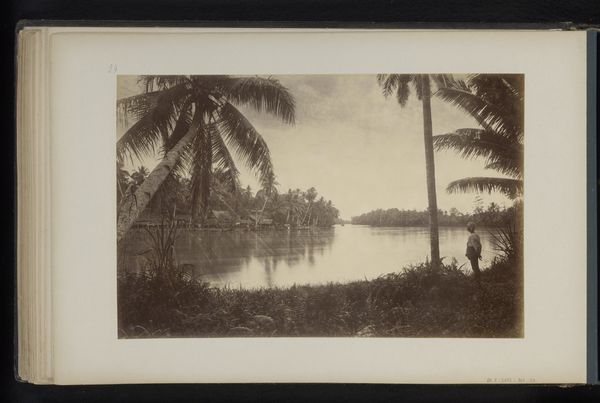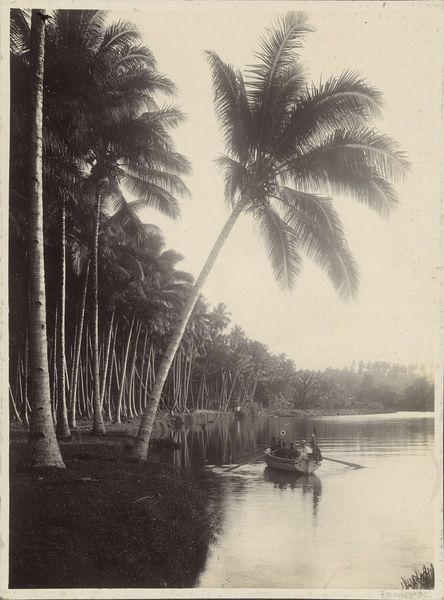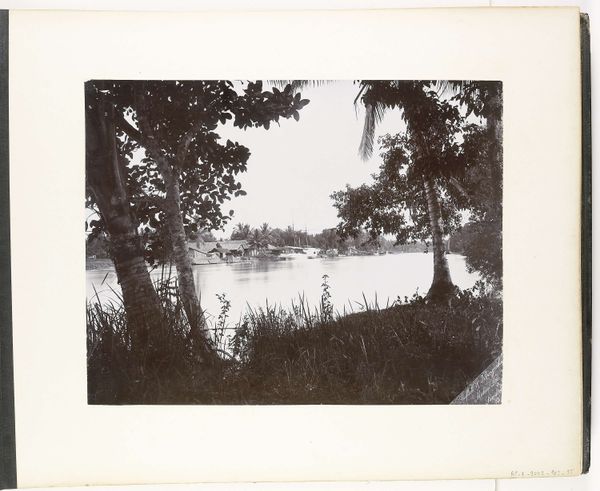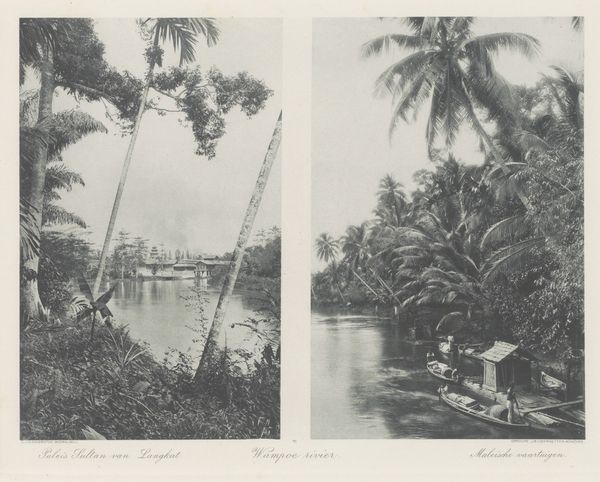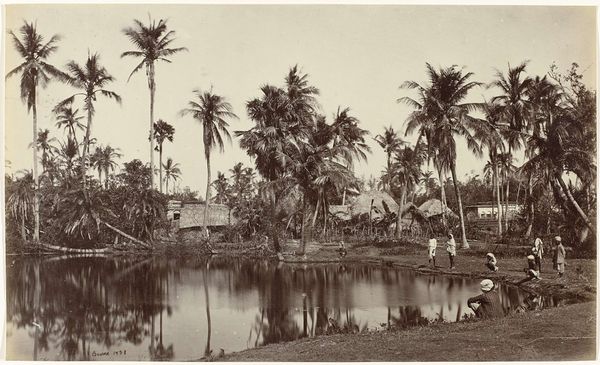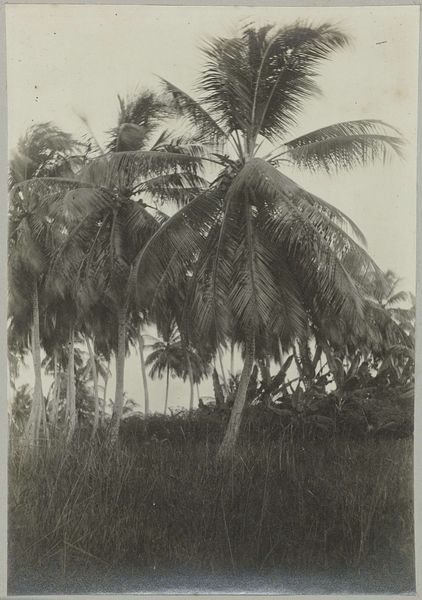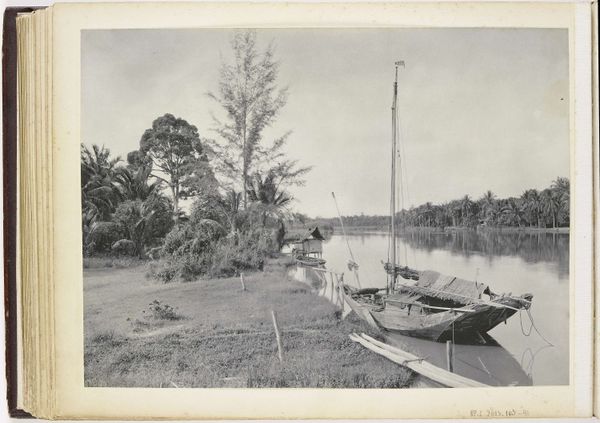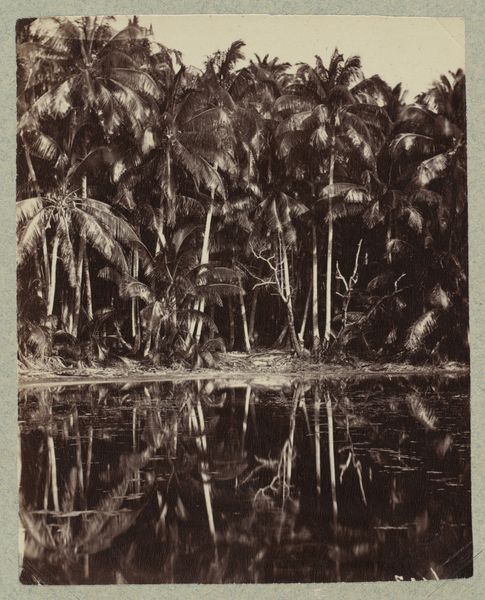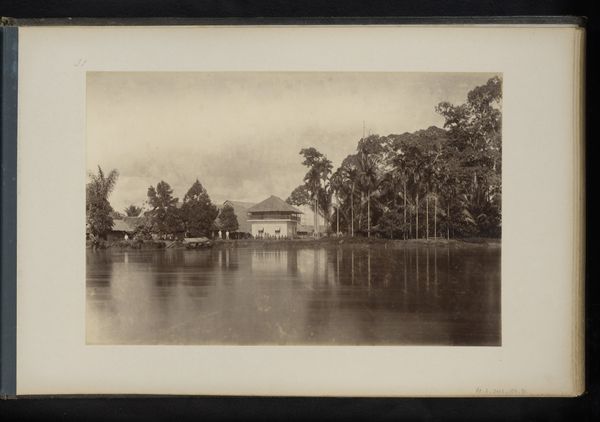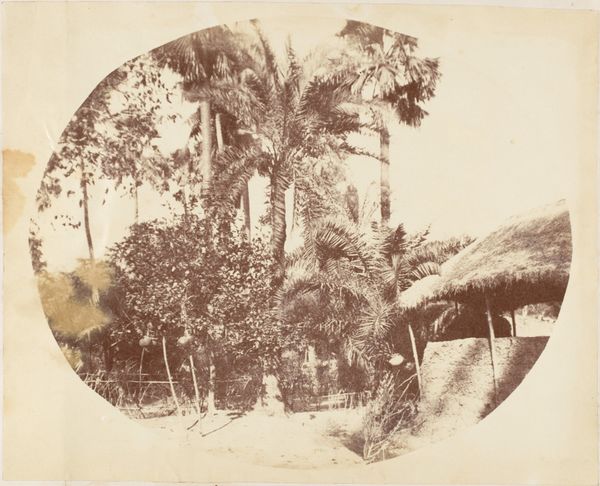
photography, gelatin-silver-print
#
landscape
#
river
#
photography
#
orientalism
#
gelatin-silver-print
Dimensions: height 74 mm, width 124 mm, height 148 mm, width 200 mm
Copyright: Rijks Museum: Open Domain
Editor: This is a gelatin-silver print photograph entitled "Saramacca en rijstveld," placing it somewhere between 1925 and 1935. I’m struck by the contrast between the upper and lower image—the dense vegetation versus the open rice field. How do you interpret this work? Curator: The photograph's juxtaposition offers a study in cultural memory, doesn't it? Consider the visual language: the thatched roofs and slender boats mirrored in the river invoke a kind of 'timelessness' of traditional Saramacca life. The lower panel disrupts this, with figures immersed in a cultivated landscape, which speaks to modern intervention, colonial pasts. Do you see the tension between these worlds? Editor: Yes, the mirroring in both images is really striking – reflections in the river and rice paddy creating almost dreamlike qualities. Is there a symbolism there? Curator: Absolutely. Water is often a symbol of change, of adaptability. The reflections imply a continuity between the past and the present. Note how the verticality of the trees contrasts with the horizontality of the land. What feelings does this evoke for you? Editor: Perhaps a struggle for dominance, or a merging of cultures. I see this division playing out between these two cultures but then coming together. Curator: Indeed, this convergence carries psychological weight. Consider "Orientalism"; outsiders view of non-Western culture through biased lenses. The photographer, viewing the rice field and river life with a lens tinged with this 'Orientalism,’ portrays both change and preservation. Can photography offer unbiased portrayal of different cultures? Editor: That’s fascinating. So, it's not just a landscape; it’s a visual statement on cultural interaction. I hadn’t considered that before. Curator: Precisely. Understanding the historical and cultural symbols empowers us to perceive the deeper, complex story of this simple diptych, isn't it?
Comments
No comments
Be the first to comment and join the conversation on the ultimate creative platform.
